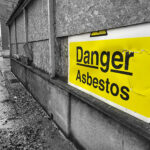A warm, dry spring has sapped Wyoming’s mountain snowpack to the point that the state likely won’t see the widespread, record flooding that occurred over the past two years, but that doesn’t mean the state is out of the woods.
National Weather Service hydrologist Jim Fahey said Tuesday that the warmer weather increases the chances that rain, instead of snow, will fall on the remaining snowpack at higher elevations, increasing the runoff and causing local flash flooding on area streams and rivers.
“It will be fast and furious and short lived, but it can bring a lot of water down at one time,” Fahey said.
Currently, either side of the Big Horn Mountains in northern Wyoming has the best chance for such flooding because a healthy snowpack remains, he said.
The U.S. Agriculture Department’s Natural Resources Conservation Service reports that the statewide snowpack is 63 percent of average this week. Nowhere is the snowpack at or above average.
The greatest snowpacks remaining are in northern and northwest Wyoming around the Big Horns and Yellowstone National Park, according to the service.
At this time during 2010 and 2011, the snowpack was well above normal and continuing to grow to record amounts, eventually causing prolonged and damaging flooding when the snow melted and sent rivers and streams out of their banks over the summer.
The NRCS estimates that the annual runoff this summer is expected to be about 75 percent of average because of the below-normal snowpack.
“We’ll safely say we’re not going to have an extended period of high runoff like we did, especially last year,” Fahey said.
But the NRCS notes that Wyoming reservoirs are higher than normal because of the high runoff from last year. Reservoirs that collect runoff are the state’s main source of water for farms and cities throughout the year.
“The reservoirs are up pretty high, actually over the whole state the reservoirs are sitting pretty well,” Ken Von Buettner, NRCS hydrologic technician, said. “They’re all above 100 percent of average.”
Was this article valuable?
Here are more articles you may enjoy.

 BNSF Says It Didn’t Know About Asbestos That’s Killed Hundreds in Montana Town
BNSF Says It Didn’t Know About Asbestos That’s Killed Hundreds in Montana Town  Viewpoint: The Impact of Behavioral Health on Workers’ Comp
Viewpoint: The Impact of Behavioral Health on Workers’ Comp  SC High Court Strikes ‘Troubling’ Denial of Comp Claim, Says Can’t Be Based on Stats
SC High Court Strikes ‘Troubling’ Denial of Comp Claim, Says Can’t Be Based on Stats  Harvard Study Again Stirs the Pot on Demotech Ratings of Florida Carriers
Harvard Study Again Stirs the Pot on Demotech Ratings of Florida Carriers 